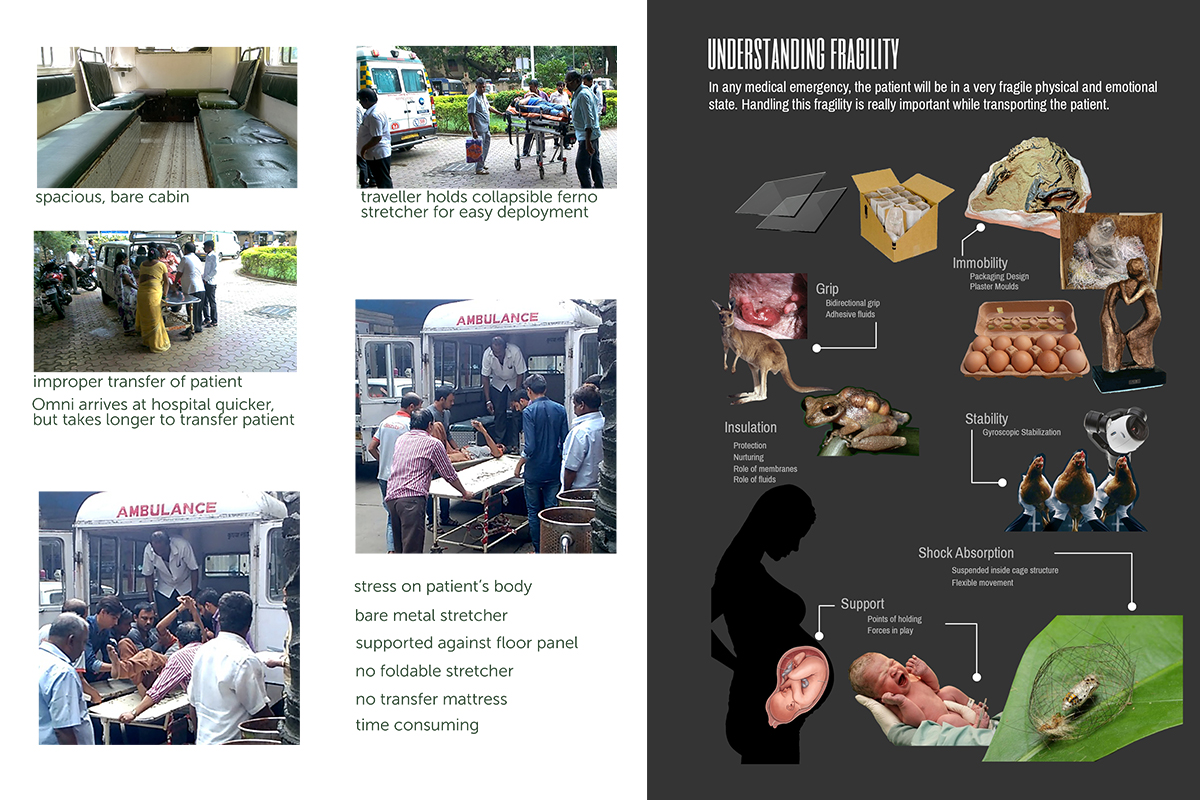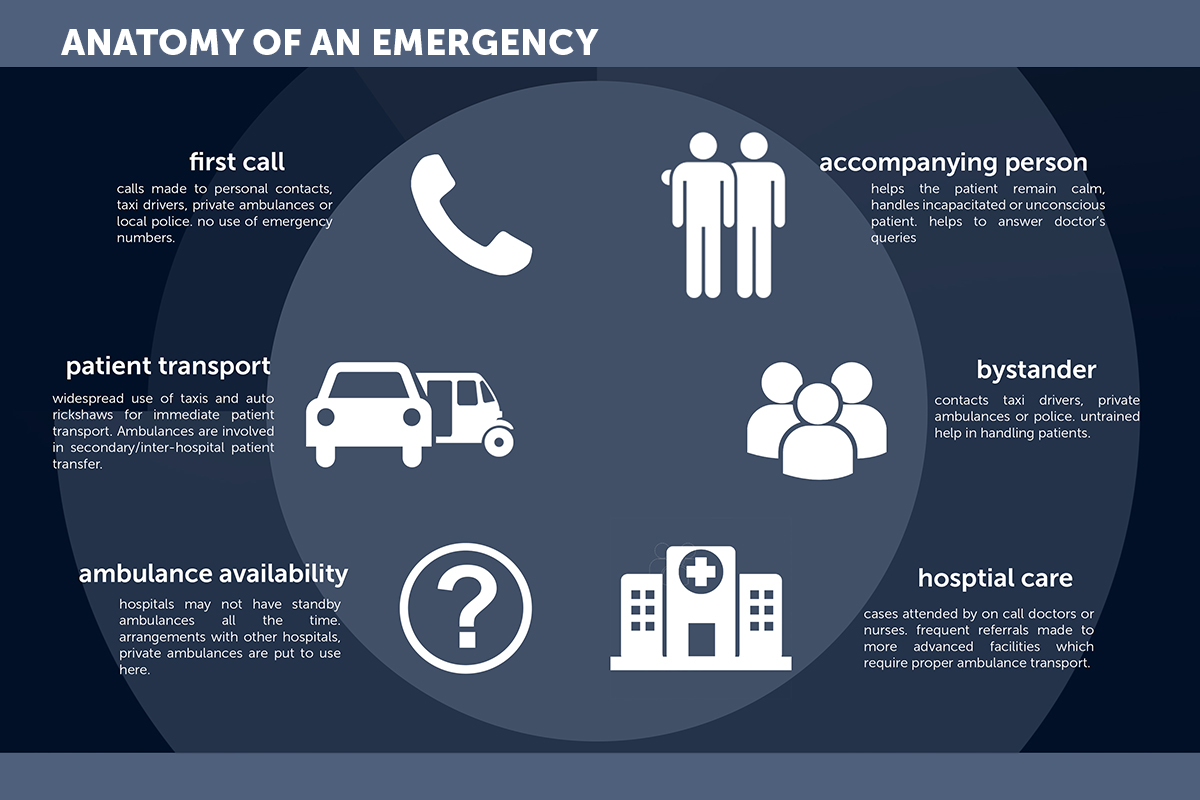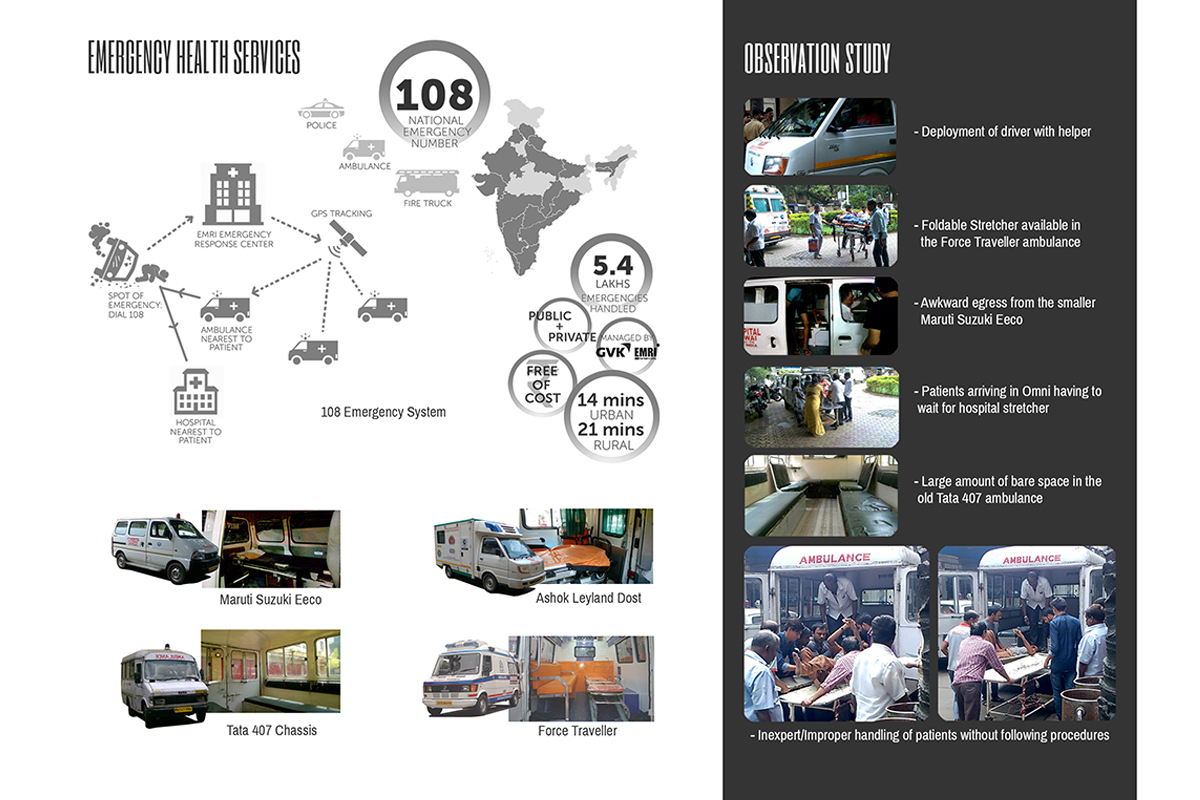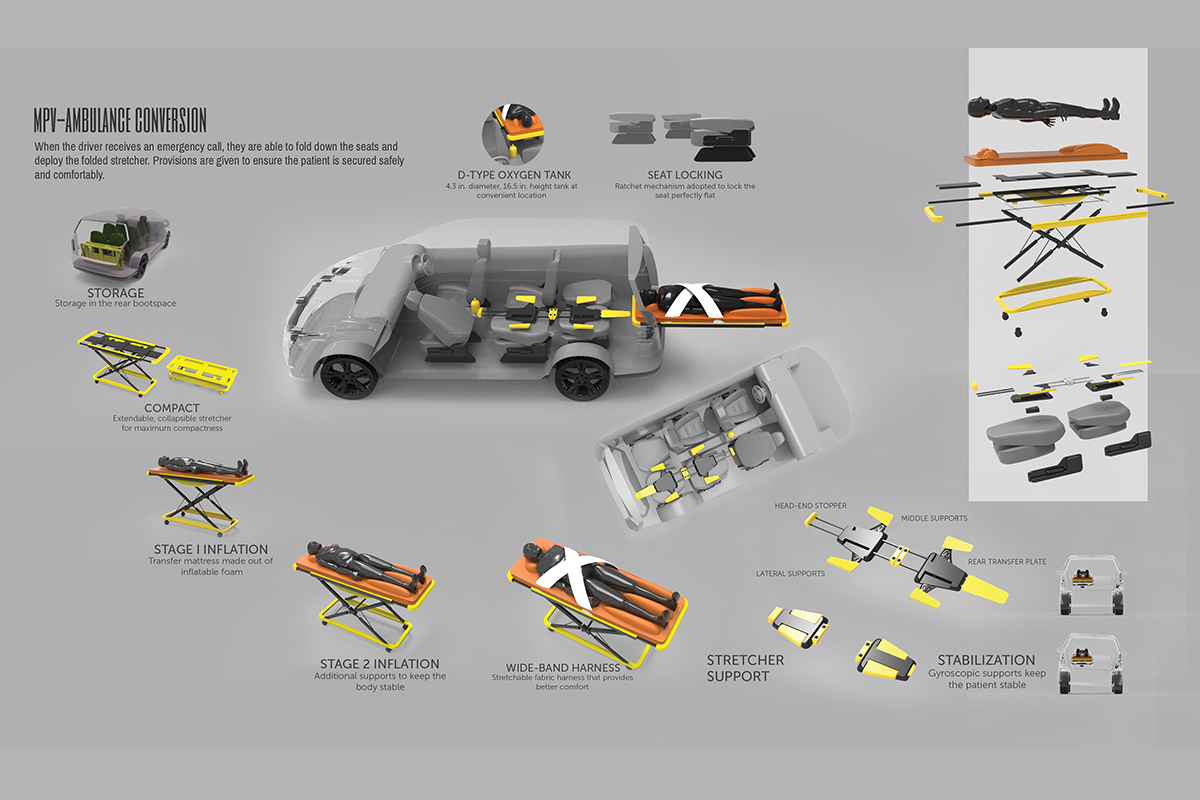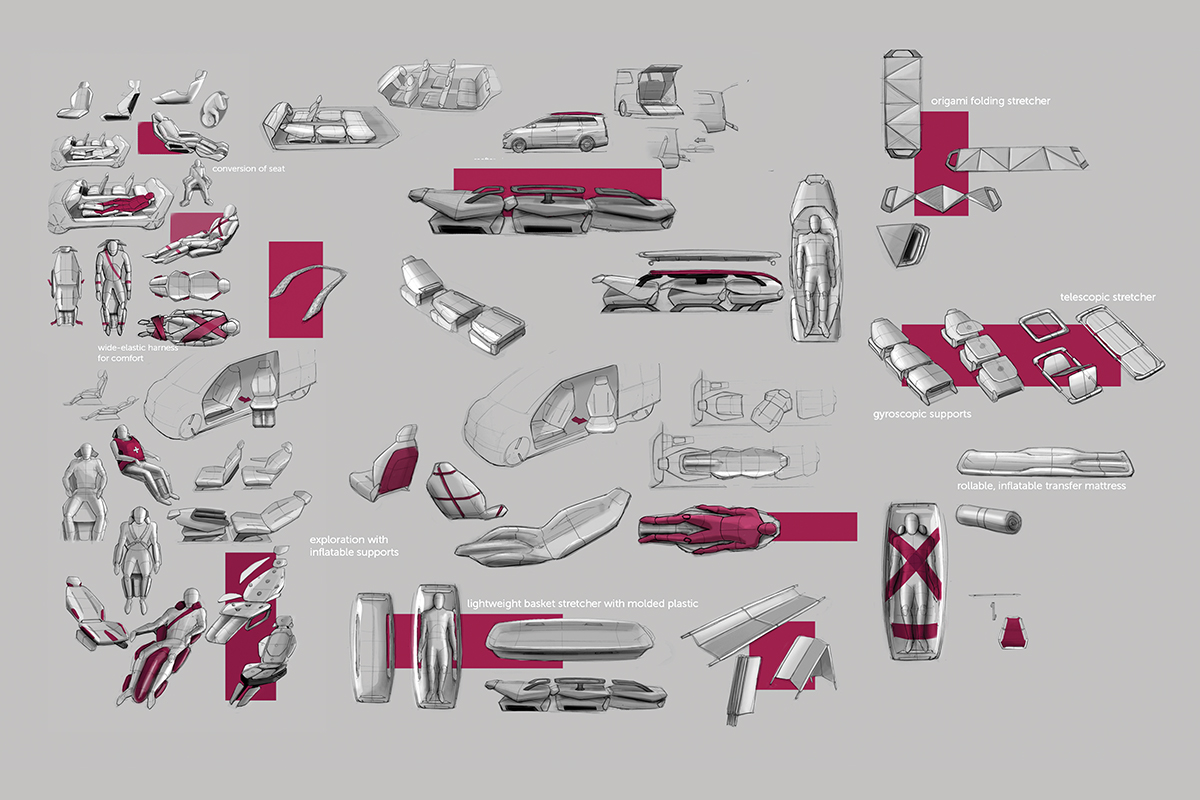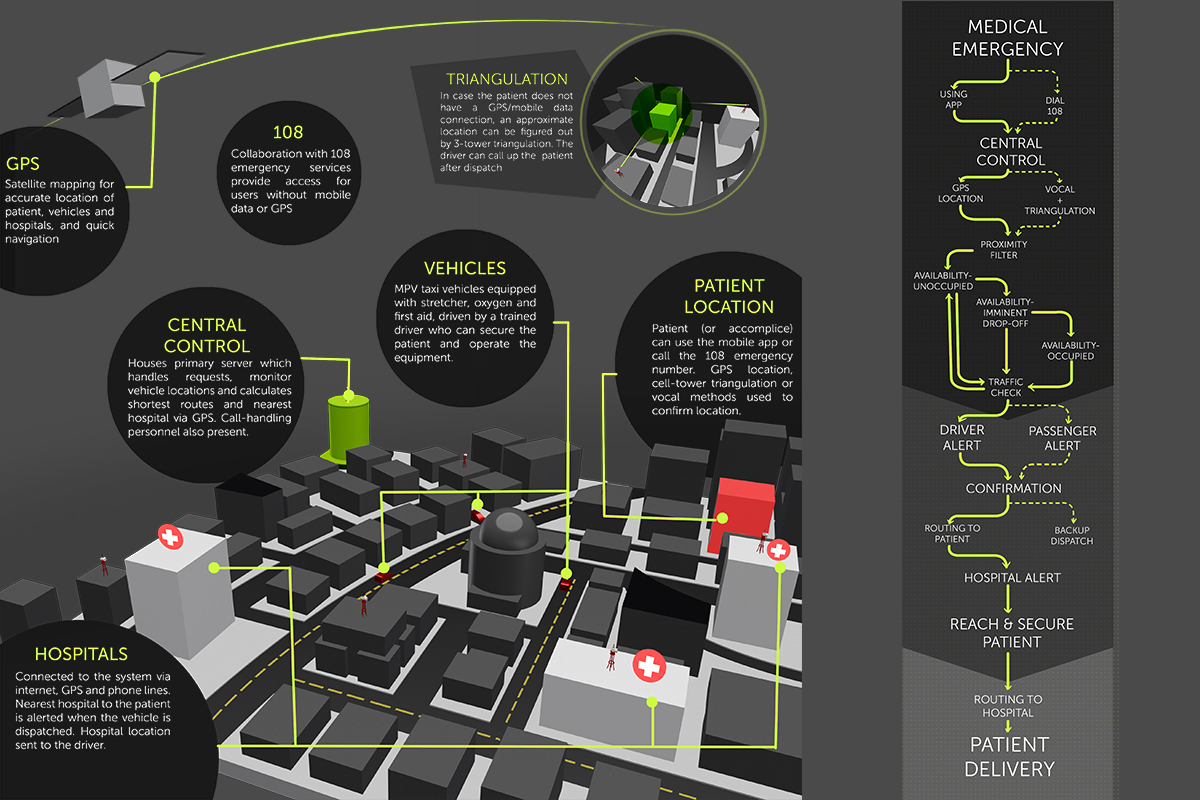Name: Ashwin R Krishnan
Guide: Prof. Nishant Sharma
Course: Mobility and Vehicle Design
Exploring Transformability of MPV into Ambulance
Emergency Medical Services (EMS) systems in India are still largely uncoordinated and decentralized. The absence of any nationalized standards or regulations result in widely scattered response times across different organizations and entities. There are the critical issues of accessibility and affordability, adding up to the fact that in many cases, the primary patient transport to hospital is usually done in other vehicles such as taxis, auto rickshaws or private cars. There is a scope for larger MPV taxis, which have enough interior room to adequately simulate the space inside an ambulance. They also have better distribution in an urban environment. Integrating an Emergency Medical Service into an existing online taxi service (such as Uber and Ola) can lead to a more accessible, affordable and trustworthy system.
Emergency Medical Services (EMS) in India is currently far from organized and universally accessible. There is a mixture of private, public and co-operative ambulance services, each with their own hotline numbers, vehicles with vastly different facilities and different levels of affordability. Most of the time a patient or relative is unaware or unable to figure out which number to dial, and there is no way for them to know how long the ambulance will take to reach them. In addition to this, the cost of private ambulance services makes them inaccessible to a large number of people. The vehicles and crew are also unregulated by any oversight body. In the research phase of this project, it was found out that the existing ambulance vehicles face problems in terms of navigating traffic as well as managing patient comfort. Many cases were observed where patients opt for personal vehicles or taxis to take them to the hospital.
The many facets of this problem called for a system-level approach, in which the issues of accessibility, transparency, availability, comfort and affordability had to be considered. Instead of dedicated ambulance vehicles waiting around hospitals or select locations for emergency calls, the idea is to use Multi-Purpose Vehicle (MPV) taxis in such a way that they can be quickly converted into a Patient Transport Vehicle. Since taxis have a much wider distribution around an urban area, they will also have quicker response times than ambulances. The design intervention was to ensure that the MPV can transform from Taxi to Ambulance with minimum effort and time. The seats can be folded flat and a compact stretcher stored inside can be used to secure the patient. A factor in consideration was the extreme fragility of the patient, and the need to make sure they are carried in maximum comfort.
“In terms of user access, an app-based system is designed to facilitate quick and transparent access to the system. GPS or Cell-Tower Triangulation is used to effectively locate the patient in case they are unable to tell their location themselves. The system prioritizes available vehicles based on proximity to the patient, fare status and traffic conditions. In case no free vehicles are available, alerts sent to the driver and passenger can enable them to decide whether to give up the current ride, in which case a backup ride will be sent to the passenger. The app interface is designed to send out a request with minimal input, and also has a tracking screen which can give the caller real-time location of the arriving ambulance. Once the patient is picked up, the system routes the ambulance to the nearest hospital, and also alerts the hospital staff about
the incoming patient. The proposed solution also incorporates additional features such as Remote Calling, in which the ambulance can be called for another person in a different location.”


